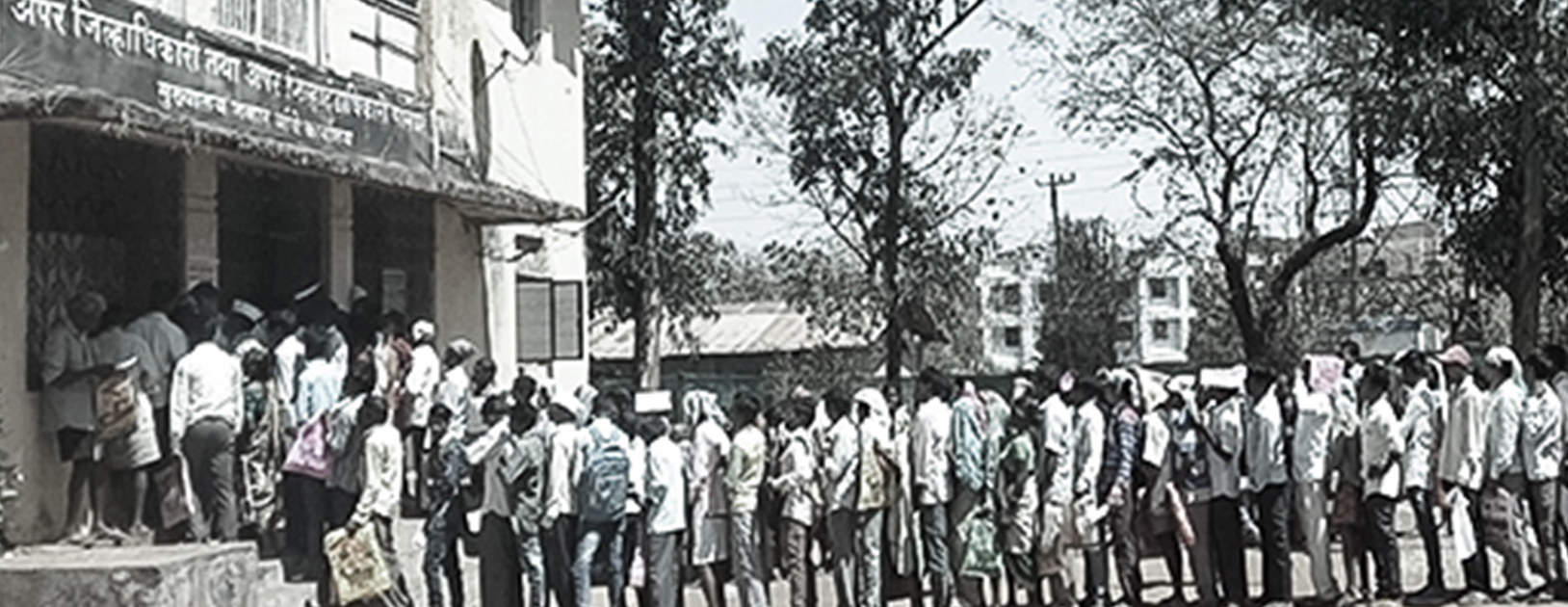The Indian bureaucracy and problems in basic public service delivery

SUMMARY OF A BLOG SERIES BY ACCOUNTABILITY INITIATIVE
BUREAUCRACY
Find below a summary of a series of blogs by Accountability Initiative (AI) at CPR on the challenges in navigating the complex government bureaucracy to access basic services and benefits:
In Water Problems in a South Delhi Slum – Challenges of Access, Usage and Awareness, Kriti Seth narrates the problems a common person faces in accessing clean water in the slums of Delhi through the experience of an Anganwadi worker. Lack of awareness of redressal mechanisms and difficulty in approaching relevant authorities compounds the problem. The words of the Anganwadi worker interviewed summarise the crux of the issue, ‘navigating the matrix of zones and departments (like Water, Water sewer, Water maintenance etc.) listed on the Delhi Jal Board website and deciphering the confusing acronyms to finally get the appropriate phone number was a challenge to a comparatively technically sound person like me.’
In Soochna ka Adhikar: Ek Pehlu Ye Bhi.. (Right to Information: Another perspective…)AI’s PAISA Associate (field staff) in Himachal Pradesh, Indresh Sharma describes the roadblocks faced by Arun, a local dairy farmer, who tried to access information through the Right to Information (RTI) Act regarding a road construction on government owned forest land. This led to a bitter dispute with panchayat and land department officials, and as a result, Arun and his family suffered adverse personal consequences, including severe monetary and psychological damage. The piece acknowledges the strengths and power of the RTI Act, but also urges the government to strengthen its provisions, so that such incidents do not recur.
Sachai Ki Jeet (Truth’s Victory), is in essence, a case study on citizen-led actions that demand accountability from the bureaucracy. Dinesh Kumar, AI’s PAISA Associate in Bihar, details the inadequacies of the Public Distribution System (PDS) in Bihar, through which millions of families access daily rations for food at subsidised rates. He shares the story of his relative who mobilised others like him and fought against a nexus of corrupt ration dealers and a hostile bureaucracy to successfully retrieve ration that was rightfully due to him.
In Right to Whose Education, Vincy Davis shares the ongoing story of a man’s mission to get his child admitted to a private school under the quota reserved for students from economically weaker sections under the Right to Education Act (RTE Act 2009). The story traces Sunil’s journey during which he has to face hurdles at every point, and despite having the requisite documents as well as substantial support from his employers, his fight to get his son admitted is still not over.
In Aadhar in Public Service Delivery: An Enabler or a Disruptor , Taanya Kapoor shares a story of the tribal areas of Madhya Pradesh, where the mandatory requirement of Aadhaar enrolment to avail key public services and direct benefit transfers has affected the most marginalised, particularly by restricting their access to cash for daily use. She illustrates this point by sharing the story of a woman from Satna district, one of the most underdeveloped areas in the state, and her struggle to get an Aadhar card made, and consequently being unable to acquire her family’s share of ration from the fair price shop. While, a scheme like Aadhar may be well-intentioned, what needs to be questioned is the sheer incapacity of the state system to tackle implementation issues, which affect many people on a daily basis, writes Kapoor.
In the last two blogs of the series – Bridging Gaps between Citizens and the Bureaucracy – Part 1 and Part 2, Vincy Davis reflects on the journeys of various people whose struggles have featured in the blog series in an attempt to identify common issues within these diverse contexts. One of the main themes that emerges is the struggle to implement a digital India with very low levels of digital literacy, and the implementation process being beset with issues of access; grievance redressal; and bureaucratic complexities. Davis also shares some tried and tested hacks to counter these issues, and lays down a path towards long-term solutions.


